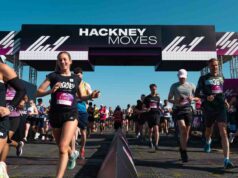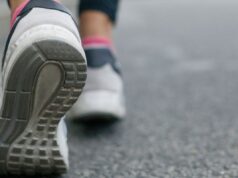Well firstly, let me applaud you in making the most significant step – the decision. Sure, some people (those who generally haven’t/can’t/won’t run a marathon) will be like ‘meh..so what..its just a marathon’. Yes. Just a marathon. Those who haven’t run it will simply call it a marathon. I’ll call it approximately 42 kilometres or 50, 000 steps or 5000 calories or 4 hours of non-stop running.
So let me applaud you again on making a significant and life-changing decision to run a marathon.
This narrative won’t be a step-by-step (pun intended) approach to running the distance, but it will give you a perspective of the considerations you should make to embark on the journey.
A quick reality check
So it’s likely that you’ll have a particular event in mind. This is good – it will give an indication as to whether or not you should register for this or next years’ event, as your training (if a novice) is likely to require at least 6 months of preparation. If you’re new to running, you’d want to aim for at least a year. This is ok as marathons are popular events, and it’ll be around when you’re ready. ‘But wait! I’ve seen 8, 10 or 16 week plans on Google!’. Yes you have, but my advice is to take your time to prepare. Firstly, muscles will gain mass, strength and endurance faster than the ligaments, tendons and other connective tissues. They will also develop faster in the initial terms than your cardiovascular system. Pushing yourself to a zero-to-hero in 16 weeks is going to increase the risk of injury, increase the risk of heart attack and general malaise from fatigue. You want to get to the start line, right? So start right.
Be selective of your gear. Despite all of the marketing that the big shoe brands push, I see very few people running in Nikes, Reeboks or Adidas. That doesn’t mean to say that they’re not up to the job, but street shoes are often heavy, ill-fitting and not supportive enough for the needs of pavement thrashing for the training, let alone the event itself. Also consider that for each stride, your shoes are going to be subject to impact forces up to 4 times your body weight. So, for me that’s a nice piece of squishy foam smashed 50 thousand times with a relative weight of 350kg. Do yourself a favour, and get yourself down to a dedicated running shoe shop, and have a really good chat with the retailer. A good retailer will provide gait/stride analysis as part of your purchase and will offer a number of alternatives for you to try on. A great retailer will have a treadmill, a 30-day return to shop-and-swop policy and aftermarket care. After all, it’s their reputation on the line as well as your comfort and enjoyment. Household names for real running shoes for runners are Saucony, Mizuno, Asics, Brooks and New Balance. Don’t be surprised if your feet only fit certain brands and very specific shoes. For example, my run analysis indicates that I’m a neutral runner when fresh, and pronate when fatigued (or in other words..a normal runner). I’m also on the larger side of the running community at a ‘healthy’ 95kg. I also have a ‘roman foot’. As such, I require a shoe that offers slight stability, is reasonably hard and reasonably narrow with a high arch. The two shoes that I keep going back to are Saucony Kinvara and Mizuno Wave Inspire. Sure I can use others, but these are my go-to shoes – in these I get no foot pain, no blisters and no chafing. I simply slip on and run.
With regard to clothing, my friends invest in all-over compression clothing. Imagine your arm pits after 4 hours of arm swinging. Or between your legs. Or for men, your bleeding nipples. Simply calling it chafing doesn’t even come close to the oh-my-God-what-have-I-done scream you’ll emit when you hit the shower. Skin tight compression gear removes a lot of risk from chafing. It also helps with pushing that much needed blood around your body to the muscles, removes lactate build up, reduces the damage caused by footstrike-shock to muscles, and speeds up recovery. As my friends call it – pick a brand and buy so much gear you’re invited to become a shareholder. I’ve found that different brands have different compressive factors. For recovery, I prefer a not-so-tight fight, such as Skins. For significant training I use 2XU Elite. For racing, I use the ultra-compressive CompresSport. Now if you were like me – over 120kg – when deciding to run a marathon, it might be a little intimidating to only wear compression clothing to run in. I get it. Its ok, the fashion brigade will not chastise you for wearing normal shorts/shirts over the top. Just remember to not wear too much; heat is a huge performance inhibitor. Having jackets, shirts and whatever wrapped around your waist is simply not comfortable or fun. And it’s extra weight you’re having to haul – so do yourself a favour and leave it at home.
Finally, get yourself a wicking hat, sunnies and some sport-specific sun block. Neutrogena do a great SPF70 spray on block, and most importantly it doesn’t burn your eyes when sweat gets into them. Remember, looking like a pro is half the battle to running like a pro.
Restraint is the biggest battle
Your run buddies, friends, family, neighbours and work colleagues (let’s call them your support crew) will all have stories about how they ran for 20 days across 5 deserts on half a cup of water and no gels (or something like that) and did it twice as fast as whatever you’re doing. The reality is this is your journey and whatever they did is actually irrelevant. Feel free to immerse yourself in all of the books about running form, pacing strategy, nutrition and hydration etc. but for now you simply need to work out what works for you. You are, by very nature, your own science experiment. And we all know that science tends to like blowing things up. Don’t blow up. It all sounds a bit esoteric right now, right? When I say blow up, I mean:
• Run too fast too soon, causing your heart rate to sky-rocket, your eyes pop out and pop at least one vein in your forehead. It’s not cool, not fun and people will laugh.
• Run too far that you feel like you need ankle/knee/hip replacements within 3 runs.
• Run too often. Savour it like a fine whiskey, not a cheap beer.
When I started running, I remembered back to my days in the Army, and how I could run 5km in 25 minutes. It wasn’t that hard then, and I’d been doing a fair amount of cycling, so I thought naively it should be achievable now, right? Oh how wrong could I have got it! Sure, I ran my Battle Fitness Test in a reasonably respectable 28 minutes and was able to give myself a pat on the back. That was all I was able to do, for nearly 3 weeks. My lungs were still out on the pavement somewhere, my chest and gut felt like it was all sitting around my ankles, and the feeling didn’t return to my legs for at least a week. And I did an amazing John Wayne cowboy walk. My second run – once I had recovered – was a much more productive 400m. Don’t do what I did and go too hard too soon – you risk demotivating yourself before you’ve even got started. I recommend this combination of frequency, duration and intensity per week to begin with:
• Two or three times
• For no more than half an hour
• At a pace where you can almost maintain a conversation
Your support crew may even spend a good 20 minutes selling you the latest gadget or gizmo that is the absolutely must have running accessory. Don’t believe the hype – and don’t be one of those runners who stand around for a good 5 minutes (holding everyone else up) at the start of run, just because they can’t get a GPS signal on their really-expensive-but-not-very-smart-phone/watch/gadget. There is absolute advantage to having some gadgets, but right now you simply need to get out there. If you absolutely must buy a widget, do your research, buy the best you can afford and ensure it is, or comes with, a heart rate monitor. Then learn how to use it properly!
Getting going
You’ve got the gear, done the research, done a few ‘test’ runs and feeling good. Now is the ideal time to make contact with a running group. Joining a group serves a number of benefits:
• Other runners are likely to be training for a similar or the same goal as you.
• They’ll be going through or have gone through the same highs and lows that you’ll experience
• Can offer sage advice and keep you informed about things that may help you progress
• Introduce you to new routes and terrain to make you an all-round runner
At some point, you’ll want to draw up a training plan and the run group may be able to help you with this. Normally, before you commence any marathon plan, there is a pre-requisite that you can run 5km non-stop. If you can’t do this just yet, then this should be your first goal. Thereafter, factor in at least 20 weeks for your marathon plan. Quite often, marathon events have ‘B’ race events leading up to the marathon ‘A’ race itself. These can be useful as they can be incorporated into your training plan, and help with the all-important dress-rehearsals.
Your training plan should consider three main factors:
1. Endurance training – commonly known as ‘time on your feet’. This training is generally done at a slower pace and for longer duration.
2. Strength training – being able to run over a variety of terrain with confidence and maintaining stride effectiveness. This training is done at your ‘natural pace’ or slightly quicker on inclines, roads and trails for somewhere between 30-90mins
3. Speed training – we all want to get to the finish line faster. This training is done at significantly faster pace, incorporates specific drills and often is no more than 30 minutes in duration.
A 20 week plan is a good idea as the numbers easy stack up – the first 6 weeks generally concerned with endurance training, and building a solid foundation. The second 6 week block focuses on strength, and finally the last block on the speed, with the last 2 weeks to allow for an easy taper and preparation for the big event. Each weekend should have at least one long run, and each run should be no longer than 3 hours in duration. This is to minimise the risk of injury and recovery time. As your training increases, you may opt to run on both Saturday and Sunday – so that you can train running on tired legs (i.e. the last 10km of the marathon). Don’t forget your rest day on Monday if you do this. You should look to incorporate each of the three elements into each week of training.
Keeping going
Weather, family, work commitments and a thousand other things will conspire against you to break the plan and jeopardize your chances of either making it to the marathon, or finishing. Be prepared to incorporate flexibility into your plan, however ensure you do your best to remain on track. This could preclude some interesting conversations with your significant other, so best to get their support sooner than later.
As the training increases, it is almost inevitable that you’ll get some aches and pains – notably lower legs, joints and some muscle groups. While usually normal, it should indicate possible over training. Ensure you have a physio that you can tap into when needed, a massage therapist and you’re eating/drinking well. If you find that your mood is changing, can’t sleep, or others notice behaviour/mood changes you’re likely to be over training – cut back on duration, intensity or frequency.
You may look to incorporate alternative forms of exercise as a means of muscle adaptation or recovery. Cycling is a fantastic means of increasing aerobic capacity without the muscle damage that running causes. Swimming is good at loosening the joints (particularly the ankles). I’ll convince you that triathlon is a great sport to get into after your marathon… If you add these sessions, do them on your off days so that you don’t impact your running.
If you are injured, do whatever the medical professional says! Do not become the world’s worst patient just because of a race. It’ll be there next year, and likely if you contact the organisers they’ll defer your entry to that next race.
Don’t do what I did – break an ankle, push medical science to its limits, recover in 6 weeks, run a marathon and re-break the fracture at kilometre 26. Yes I finished, but I was a mess, am ashamed to show the photos, completely ignored my wife at the finish line (this did NOT go down well) and then needed 3+ months to recover with absolutely no exercise whatsoever.
You’ll find that recovery can be achieved much more effectively by changing your diet. Simple things like reducing/removing alcohol, dairy, and meat can increasing your intake of fruits and veggies will turn you into a lean running machine, capable of running multiple half marathons in a day and knock out another 10km the day after. But then, your friends may also look at you weirdly, and ask if you hug trees and bash tambourines as you run. Do what you feel is needed, and tell only your most trusted friends/family if you think the change will be too dramatic for them. While every person is different, I’ve found that high protein/low carb diets don’t lend themselves very well to running. Experiment and stick with what works for you.
And finally
Don’t forget why you decided to run a little over 42km, 50,000 steps or do so for at 4 hours non-stop. You’re going to experience highs and lows, so keep a wall of fame somewhere to refer to. Any medals or race numbers you get, put them. Before and after photos will go here. Encouragement from your friends. Route maps, times and weight charts belong here. Eating diaries. You get the idea.
And lastly, while it is a race, a marathon is much more than a race. It is a journey, and a life changing experience. You’ll make some awesome friends, look fantastic and get fit as hell in the process. And more importantly, you’re part of that hallowed, Chuck Norris Type ‘A’ 1% of people who are brave enough to attempt this. Bask in that glory, you running legend!
About the author
Chris Collins is a happily married 38 year old who, following a climbing accident and needing to re-learn to walk in 2009, embarked on a life-journey to see to what extent his injuries would impact his life. To this day, he has run over 6000km, completed multiple half and full marathons, finished as a top 20 age group competitor in a variety of short and long distance triathlon and a number of road and mountain cycling events. A keen, but not very good, stand up paddle boarder, he shares his life with his wife Cindy and two dogs, Sam and Oscar. Chris helped form run group, @RunFitFamily, through Shoe Science in Auckland New Zealand, to whom he is now sponsored by. Chris is also brand ambassador to BSXAthletics and supported by Saucony shoes and Rudy Project eyewear. He can be found on twitter – @chris_c_nz.







